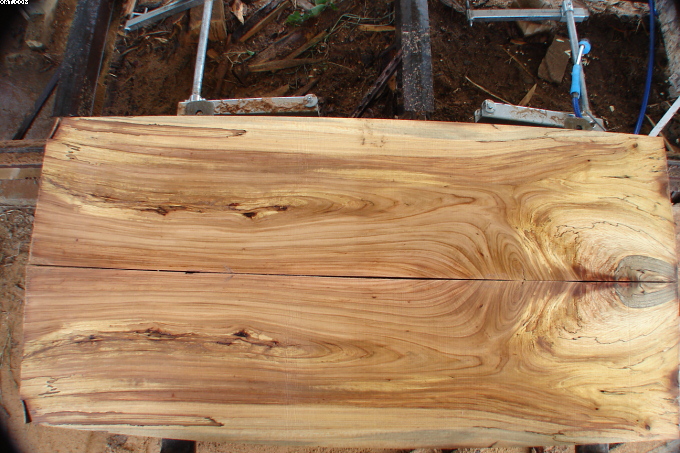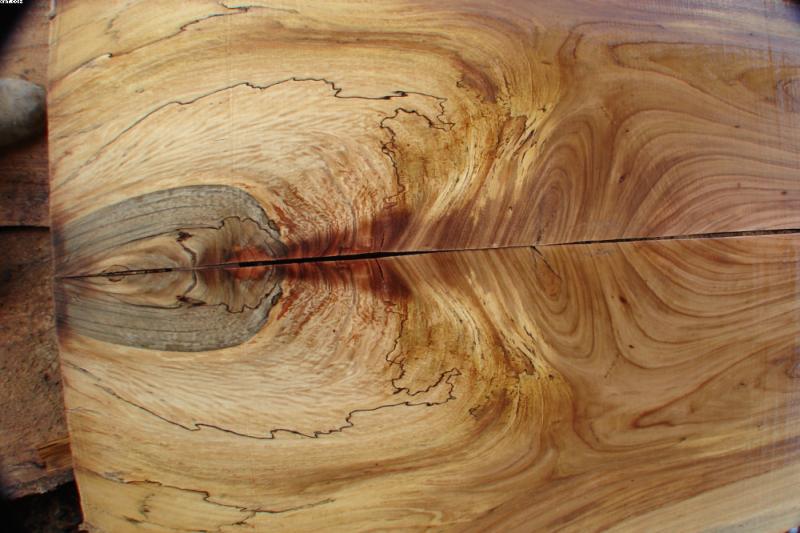Uses for Mulberry Wood
Other Versions
Spanish
French
Mulberry is nice for turnings, knick-knacks, and furniture. April 18, 2009
Question
I have available two big mulberry trees. Has anybody used it for furniture or turning? Any info would be appreciated.
Forum Responses
(Forestry Forum)
From contributor K:
I have done lots of turning from it, and think it is great for that. It is unbelievably yellow when you are working it, but it turns a light to medium brown within a few months. It is easy to work with, and finishes well. There is a small medular ray flake that is worth planning for.
From contributor W:
Here in Sacramento, if you look on the streets, before they pick it up, you can get the mulberry burl chunks, that people cut off the tops of their tree. Usually, the pieces are riddled with gaps and holes, but the pieces large enough, make great pens and other small turnings. The wood is yellow, to almost a deep gold and becomes incandescent, once you polish it up to 12,000 grit micro mesh. Also because of the many years of various cuts, you get some incredible grain patterns. Good luck, on the larger stuff, I have not been as happy with it.
From contributor L:
I've used it for some frame and panel work and for contrasting elements and inlays on furniture. It works easily and finishes well and turns a golden brown with time. I had two big trees cut into 4/4 and air dried it. One of the logs had wind shake but the other was very nice.
From contributor F:
Mulberry is one of my all-time favorites. It will split if you put a nail in it, but that's the worst thing I can say. The wood is gorgeous! Deep brown when aged just a little bit. If well sanded and given a clear coat, it looks almost like tiger's eye.
From contributor T:
Here is some mulberry I cooked up. I allowed it to sit around a few months and incubate.

Click here for higher quality, full size image

Click here for higher quality, full size image
From contributor A:
I made a small bench out of mulberry. It was a bright, beautiful yellow when I finished it, but it has darkened to an ugly brown color. It's too bad it doesn't stay bright yellow.
From contributor L:
I've got a rocking chair I made 20 years ago that has mulberry trim on a maple frame. The mulberry has turned a nice orangish brown and has good luster. Osage is a close relative and has the same look but is much harder. I've got a mallet I made from it 25 years ago - same nice orangish brown, and I still use it today.
The comments below were added after this Forum discussion was archived as a Knowledge Base article (add your comment).
Comment from contributor A:
Mulberry is used for expensive furniture in Japan. It is especially highly sought after for tea ceremony instruments and the "go" board game. Lots of traditional furniture is still made from it. Some furniture makers use mulberry veneer over their furniture to make them look traditional. It is possibly the next most sought after wood after (now protected) keyaki, Japanese elm.
Comment from contributor B:
I have just severely trimmed my mulberry tree. It is 15 years old and so big it was unmanageable. I once read that in mediaeval England, mulberry was often used for making the famous long bow. It dries to a very strong timber and I have made many rustic though interesting walking sticks. I currently have four pieces set aside to try and reproduce a long bow. It turns well, even when green, but for timber it must be cut on the quarter.

